Crimson Cattleya (Cattleya labiata), also known as the Ruby-Lipped Cattleya, is a stunning perennial flowering plant from the Orchidaceae family. Native to Brazil, this epiphytic species thrives by attaching itself to trees, rocks, or even growing in soil. Renowned for its vibrant blossoms, the plant plays a vital role in attracting pollinators, particularly bees. Its adaptability and striking beauty have made it a favorite among orchid enthusiasts worldwide.
| Common name | Cattleya Labiata, Crimson Cattleya, Ruby-Lipped Cattleya |
| Botanical name | Cattleya labiata |
| Family | Orchidaceae |
| Species | labiata |
| Origin | Brazil |
| Life cycle | Perennial |
| Plant type | Epiphyte |
| Sunlight | Partial Shade |
| Maintenance | High |
| Soil condition | High Organic Matter |
| Drainage | Well-Drained |
| Growth rate | Slow |
| Height | 3 in. – 2 ft. |
| Flower color | Gold, Yellow |
| Leaf color | Green |
| Stem color | Green |
| Flower benefit | Showy |
| Uses | Container |
I. Appearance and Characteristics
Cattleya labiata, also known as the crimson cattleya or ruby-lipped cattleya, is the type species of Cattleya, discovered in 1818 in Brazil.
This plant grows in the northeastern area of Brazil, in the states of Pernambuco and Alagoas. They grow to different sizes depending on the area from which they originate. Those that are growing in Pernambuco are smaller, with small but colored flowers, with most of them being lilac. The interior part of the flower is a dark lilac color. Plants from Alagoas are bigger and have larger flowers. Some varieties, such as Cattleya labiata var. semialba, have large white flowers with a touch of yellow.
There is another variety of semialba, with lilac in the inferior part of the flower. This plant is an epiphyte, growing up in trees, where light is plentiful. However, there are also many other places where this plant could grow, such as directly on rock with very little soil.
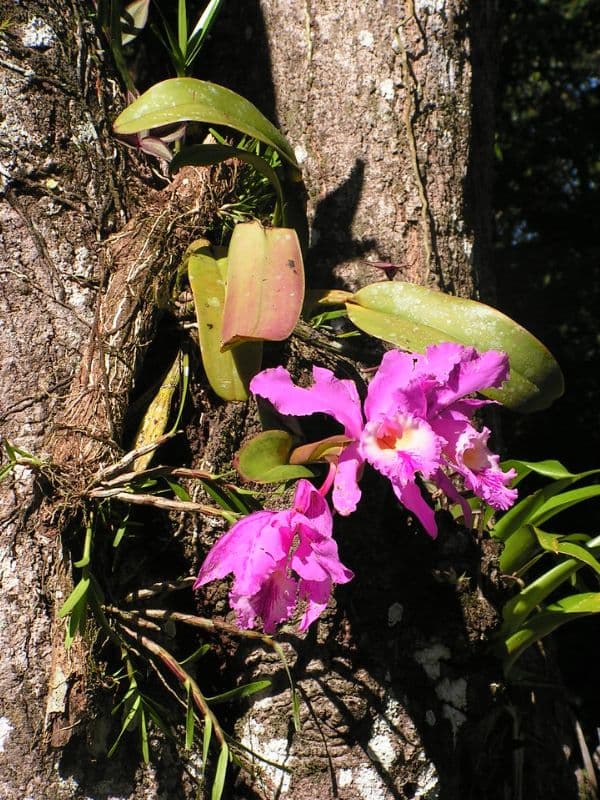
The plant itself is a medium-sized unifoliate (labiate) Cattleya, with a medium-sized rhizome. The plant has long leaves, with a tough (coriaceous) consistency because of the aridity in the canopy of trees, due to a short dry season. For water requirements, the plant has a pseudobulb under every leaf to store water and nutritive substances during the short dry season. In the wet season new leaves grow rapidly, producing a large flowered inflorescence.
Flowers are white or lavender colored with a darker spot in the lip. Pollination is performed by insects, usually by a scent-collecting male euglossine bee. The result is a capsule with a very large number of seeds (10,000-20,000).
The diploid chromosome number of C. labiata has been variously determined as 2n = 40, 41, and 46. The haploid chromosome number of C. labiata has been variously determined as n = 21 and 21.
II. How to Grow and Care
Sunlight
Crimson cattleya thrives in partial sunlight, receiving bright but indirect rays for healthy growth and robust flowering. While crimson cattleya tolerates a range of light exposures, from full sun to full shade, deviations can impact its vitality. In full sun, crimson cattleya may endure stress, leading to leaf scorch, whereas in full shade, it may exhibit reduced blooming. Indoors, east or west-facing windows are ideal, providing gentle light.
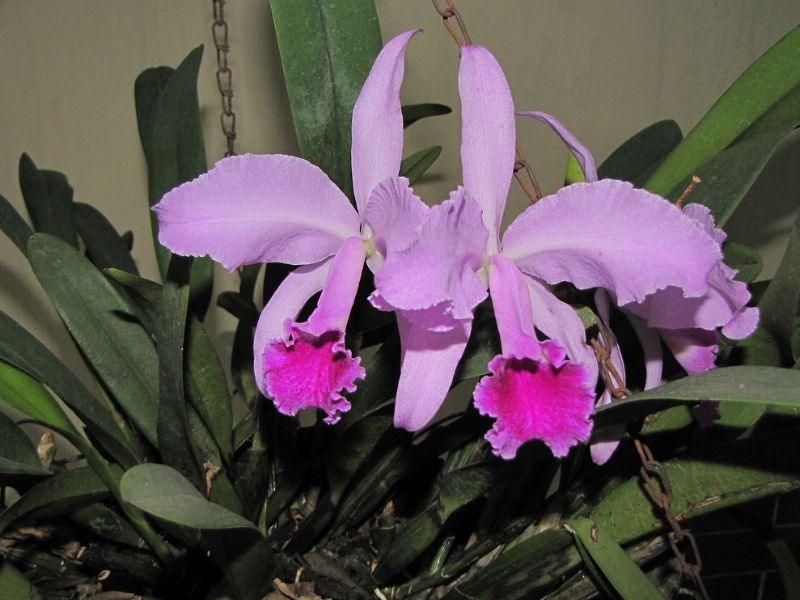
Outdoors, planting under a canopy that diffuses light ensures the delicate balance crimson cattleya requires. Watch for leaf color as a cue; a light green indicates optimal light, while darker leaves suggest insufficient light.
Temperature
Orchid plants are native to tropical and subtropical regions, preferring warm, moist conditions. Optimum growth temperatures are between 18 to 28 ℃, and it’s best if there is a certain difference in temperature between day and night: for example, 20 to 25 ℃ during the day and 15 to 18 ℃ at night. Crimson cattleya is a drought-tolerant plant, but cannot tolerate waterlogging, and grows well at 50-70% humidity. If the leaf tips are withered, it means the environment is too dry. Use a humidifier or spray bottle to increase the air humidity.
Watering
Crimson cattleya thrives in the high humidity of its native tropical rainforest, displaying a preference for consistent moisture without being waterlogged. Its watering habits suggest moderate drought tolerance, requiring a balance between hydration and drainage. The plant should be watered every week to maintain optimal health. As an epiphytic orchid commonly grown indoors, crimson cattleya benefits significantly from regular misting to replicate the humid conditions it naturally prefers, enhancing both its lush foliage and vibrant blooms.
Soil
The “soil” required for crimson cattleya is special because, as an epiphyte, it originally grew on big trees in tropical forests. You need to mimic this growing environment with, for example, water moss, wood chips, coconut shells, volcanic stones, or perlite as soil substrate. You can also buy orchid-specific soil directly from gardening stores.
Fertilizing
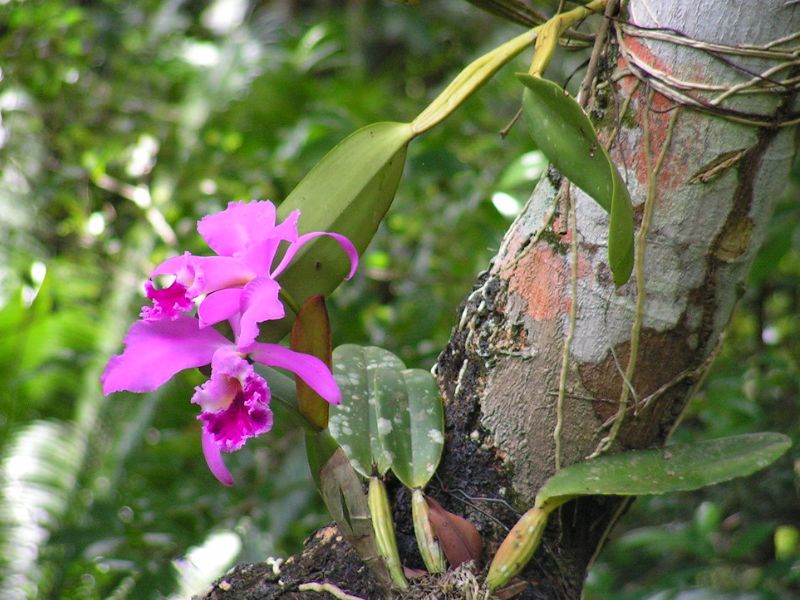
Fertilize crimson cattleya bi-weekly during active growth with high phosphorus fertilizer to enhance blooming. In dormant periods, reduce to monthly. Use 1/4 strength, water-soluble fertilizer, ensuring thorough application to avoid root burn. Seasonal shifts dictate adjustment of fertilization frequency and strength, critical for crimson cattleya’s vigor and flower production. For safety, don appropriate gear and follow product instructions. This targeted fertilization approach is vital for crimson cattleya’s thriving.
Pruning
It is best to prune wilted crimson cattleya flowers promptly after blooming to reduce unnecessary nutrient consumption and promote more blooms. Trim withered and diseased leaves promptly to increase air circulation, thus reducing pests and diseases.
Propagation
Crimson cattleya is best propagated through division, ideally during spring or autumn. The process can be moderately challenging but shows success through new root growth. Careful handling and optimal conditions are crucial for effective propagation.
Transplanting
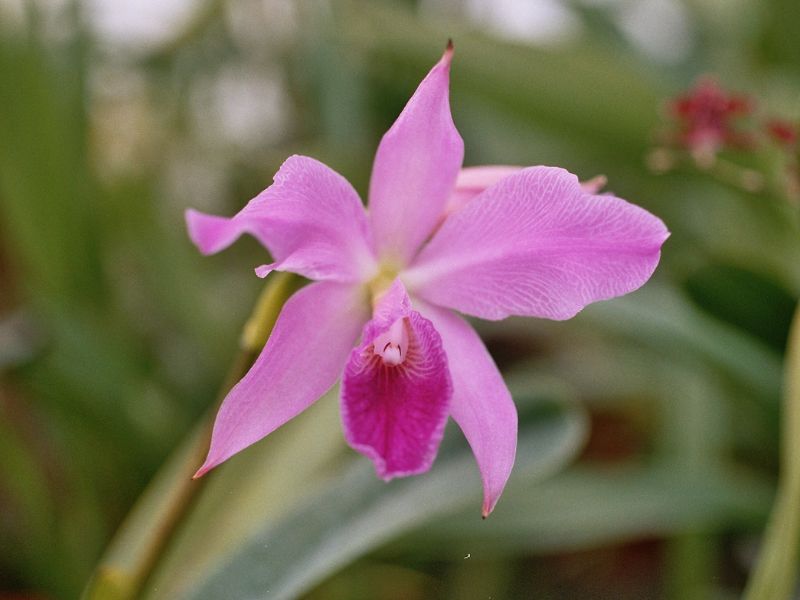
To transplant crimson cattleya, the ideal season is early to mid-spring or mid to late fall, when temperatures are mild and roots can establish well. Choose a location with bright, filtered light and well-drained soil. Remember to handle the delicate roots gently for a successful transplant.
III. Uses and Benefits
A beautiful autumn-flowering orchid, crimson cattleya has been gladly cultivated among orchid enthusiasts for nearly 200 years. The delicate, showy blooms are the delight of many hobbyists—crimson cattleya is a species that is not highly commercial. It is most commonly grown in greenhouses because of its high humidity and light requirements, but in warm climates it can beautify outdoor areas as well.
IV. Harvesting and Storage
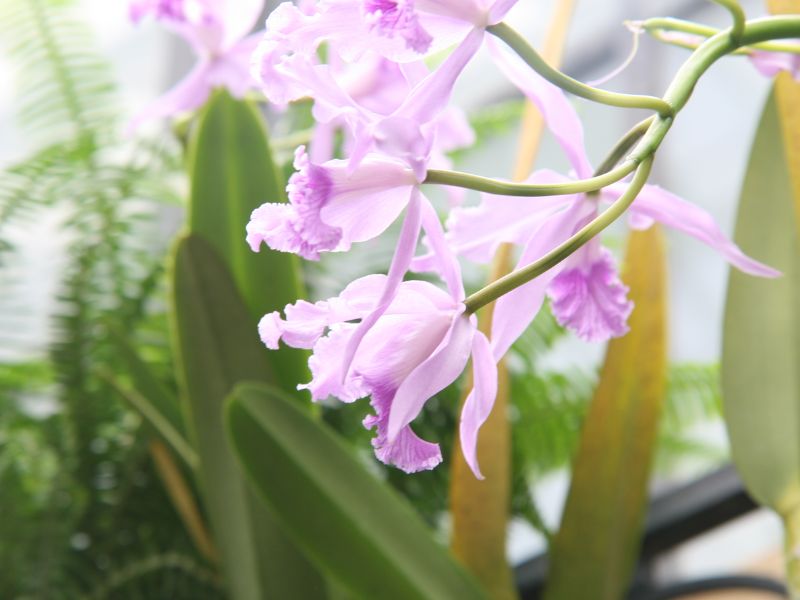
If you want to display crimson cattleya flowers in vases, harvest there are only 2-3 flowers blooming on the stem. Cut diagonally at the bottom of the flower stem, and place it in a vase immediately. You can enjoy the cut flower in clean water for about 14 days, or for a longer time with preservatives.
Find Where to Buy the Best Crimson Cattleya (Cattleya labiata)


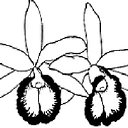













Leave a Reply